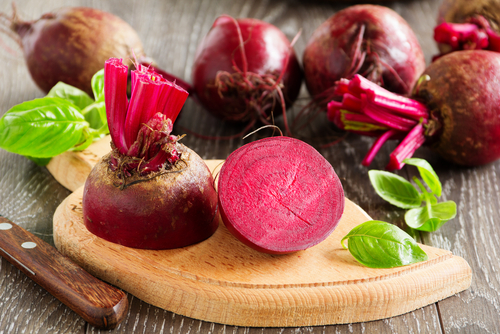You’ve no doubt heard about free radicals and the havoc they wreak on your body. Free radicals are responsible for inflammation throughout the body that causes aging and disease like diabetes, arthritis, and cancer.
But you can fight these free radicals by ensuring you get enough antioxidants into your diet. While all antioxidants are beneficial, some are extra powerful.
We’re talking about Polyphenols. These potent chemicals found in plants can safeguard you from developing even life-threatening diseases like cancer and heart disease.
What Exactly Are Polyphenols?
Polyphenols are natural plant chemicals found in foods like fruits, veggies, teas and chocolate. These chemicals can be broken down into four categories:
- Phenolic acids
- Flavonoids
- Stilbenes
- Lignans
Polyphenols are what give fruit and vegetables their bright colors. They are generally found in the outer layers of the plant, such as the skin. This is why it’s important to leave the skins on your produce, and why if you can’t buy organic produce, you must always wash your fruits and veggies thoroughly.
Science is now pointing to the significance of these compounds and why they are so powerful in the fight against degenerative diseases. Research supporting polyphenols in the prevention and treatment of heart disease is particularly well-documented. It suggests that including fruits and berries with a blue, red or dark purple hue can significantly reduce a person’s risk of developing heart disease. Not only do these particular antioxidants scavenge free radicals and reduce inflammation in the body, they also inhibit vascular endothelial growth factor (VEGF), which causes complications with atherosclerotic plaques in the arteries, a factor in heart disease.
Purple Potatoes and Colon Cancer
Animal studies have investigated the effect of polyphenol-rich purple potatoes on colon cancer cells. After 13 weeks, pigs that were fed a diet containing purple potatoes were found to have lower levels of interleukin-6 (IL-6), a proinflammatory protein known to promote cancer in the colon.
According to the authors:
“Anti-IL-6 therapeutics are available for treating colon cancer; however, they are expensive and induce negative side effects. Thus, whole foods could be a better way to combat low-grade chronic colonic inflammation and colon cancer. Whole plant foods have been shown to decrease chronic diseases due to the potential of anti-inflammatory dietary compounds acting synergistically.”
Other research has found polyphenols to not only help inhibit the proliferation of colon cancer cells but to also induce cell apoptosis (programmed cell death). Yet more reasons to start incorporating purple foods like purple potatoes into your diet.
But Aren’t Potatoes High in Starch?
Potatoes come with numerous health benefits, but many people are concerned that the high starch content is something to be concerned about. And indeed, starchy foods do raise your blood sugar, which can lead to insulin resistance and ultimately type 2 diabetes.
But here is a great way you can have your cake, or rather potatoes and eat them too!
When you cook a normally-digestible starch, such as potato and then let it cool in the refrigerator, you alter its chemistry through a process called retrogradation, transforming much of the starch into digestive resistant-type starch.
As the name implies, resistant starch is resistant to digestion. It passes through the GI tract and slowly ferments in your large intestine.
Resistant starch feeds healthy bacteria in your gut, acting as a prebiotic, raises post-meal fat burning by as much as 30%, and adds bulk to your stool to help you stay regular. And, if you’re diabetic, resistant starches does not spike blood sugar. In fact, research has found that resistant starch helps improve insulin resistance and reduce your chances of developing diabetes.
So, if you want the antioxidant benefits and numerous others from purple potatoes, eat them cold.
[Editor’s Note: If eating cold potatoes doesn’t appeal to you but you’d still like to obtain the numerous and powerful health benefits of resistant starch, try Starch B Gone. Is it possible to eat forbidden foods and still lose weight? It is with Starch B Gone – Click Here for more info.]
Take Advantage of Mulberries
Mulberries are another purple food rich in polyphenols and other potent antioxidants. Did you know in ancient times, Romans used mulberries to treat diseases of the mouth, throat and lungs? Native Americans also used this delicious berry to treat constipation and dysentery.
Beyond polyphenols, mulberries also contain resveratrol, a natural compound believed to promote heart health and overall vitality. Mulberries have also been found to improve digestive health, thanks to their high fiber content, blood vessel health, thanks to that resveratrol we just mentioned, and blood sugar control, thanks to the special antioxidant called DNJ (1-deoxynojirimycin) that inhibits an enzyme in your gut that breaks down carbohydrates into sugar. Mulberries have also been found to prevent the buildup of fatty deposit in and round the liver.
Add More Polyphenol-Rich Foods to Your Diet
If you want to get more of these powerful antioxidants into your diet, it’s important to eat more colorful fruits and vegetables, paying particular attention to blue and purple produce like berries and potatoes.
Fruits and veggies are an excellent source for a wide array of plant compounds, not just antioxidants such as polyphenols, creating a synergistic effect where the total benefit is far greater than the sum of its parts.
Here are some ways you can increase the intake of antioxidants in your diet:
- Juice them for a refreshing and healthy morning beverage
- Add fresh berries to cereals, oatmeal and yogurt
- Use purple potatoes instead of white for your side dishes
It’s important to mention that organic foods have a higher polyphenol count than non-organic produce. How a plant is grown plays a big part in the healing potential it contains. Organically grown foods contain higher levels of polyphenols compared to conventionally grown varieties, so whenever you can, try to buy organic.
 Validating...
Validating... 






Leave a Reply